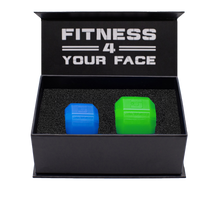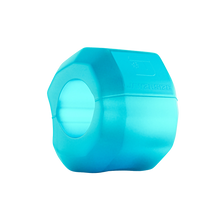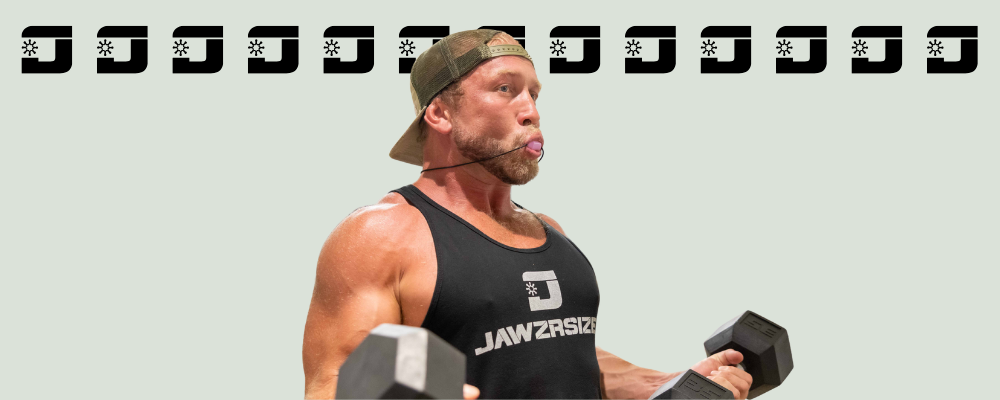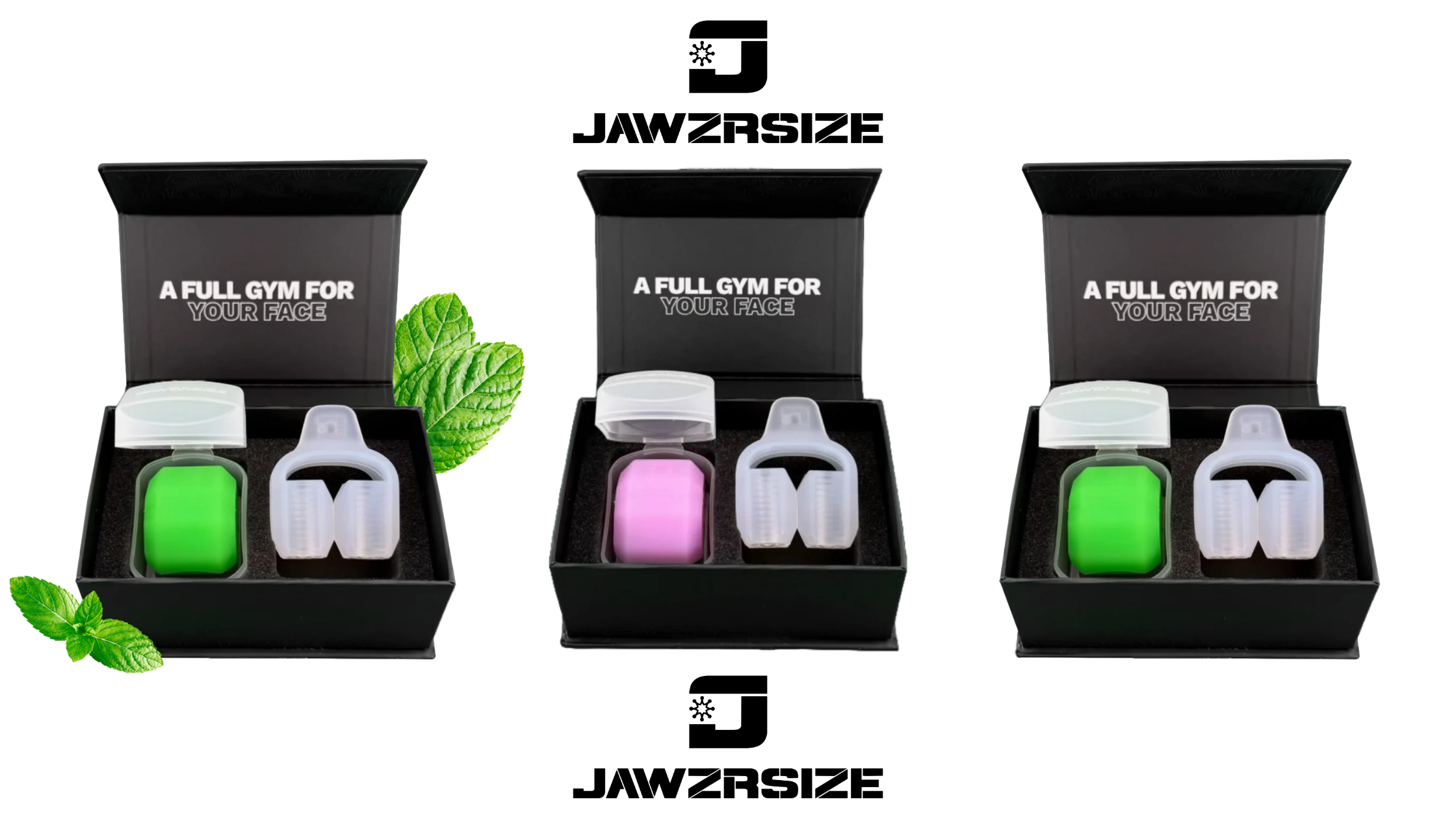You may have seen the term "mewing" popping up on social media or in discussions about facial aesthetics and jawline definition. But what exactly is this technique, and how does it claim to improve your facial structure?
While mewing has generated buzz online, it's important to approach any new facial exercise or technique with a critical eye and a thorough understanding of the science behind it. In this article, we'll dive into the world of mewing, exploring its origins, purported benefits, and the debate surrounding its effectiveness.
What is Mewing?
Mewing is a facial exercise technique that involves placing the entire tongue against the roof of the mouth, with the goal of improving jawline definition and overall facial posture. The idea behind mewing is that by maintaining this tongue posture consistently, you can encourage the growth and development of the maxilla (upper jaw) and mandible (lower jaw), leading to a more defined jawline and better facial structure.
Proponents of mewing claim that improper tongue posture, such as letting the tongue rest on the bottom of the mouth or pushing it against the teeth, can lead to a less defined jawline and a variety of orthodontic issues. By consciously maintaining proper tongue posture, mewing aims to counteract these negative effects and promote a more aesthetically pleasing facial structure.
While the concept of mewing has gained significant attention on social media platforms, particularly among younger generations seeking to improve their facial aesthetics, it's important to note that the scientific evidence supporting the technique is limited. Many orthodontists and dental professionals remain cautious about fully endorsing mewing as a proven method for achieving a more defined jawline.
Advantages of Mewing
While the scientific evidence supporting mewing is still limited, many practitioners and advocates of the technique claim that it offers several potential benefits for facial aesthetics and overall well-being.
1. Enhance Jawline Definition
One of the primary reasons people are drawn to mewing is the promise of a more defined and chiseled jawline. Proponents of mewing believe that maintaining proper tongue posture can help guide the growth and development of the jaw, leading to a more pronounced and attractive jawline over time.
As you consistently practice mewing, the muscles in your jaw and chin may become more engaged and toned. This increased muscle activity can contribute to a sharper, more defined appearance in the lower face. However, it's important to keep in mind that individual results may vary, and the extent of jawline improvement depends on factors such as age, genetics, and dedication to the technique.
2. Better Facial Posture
Mewing places a strong emphasis on proper facial posture, which can have a positive impact on your overall appearance and well-being. By keeping your tongue pressed against the roof of your mouth and your lips gently sealed, you naturally encourage a more upright and balanced posture in the face and neck.
This improved facial posture can help alleviate strain on the neck and shoulder muscles, which may contribute to a more relaxed and confident appearance. Additionally, proper facial posture can help prevent the development of a "double chin" or sagging skin in the neck area, as the muscles in these regions remain engaged and supportive.
Maintaining good facial posture through mewing can also have benefits beyond aesthetics. It can promote better breathing habits, as the tongue's position helps keep the airway open and unobstructed. This can lead to improved sleep quality and reduced risk of breathing-related issues such as snoring or sleep apnea.
3. Potential Relief for TMJ Issues
Some practitioners and advocates of mewing claim that the technique may offer potential relief for individuals suffering from temporomandibular joint (TMJ) disorders. TMJ disorders can cause pain, discomfort, and clicking sounds in the jaw joint, which can be both physically and emotionally distressing.
Mewing's focus on proper tongue posture and facial muscle engagement may help alleviate some of the tension and strain on the TMJ. By promoting a more balanced and relaxed position of the jaw, mewing may reduce the pressure and discomfort associated with TMJ disorders.
However, it's crucial to note that the effectiveness of mewing for TMJ relief is largely anecdotal, and more scientific research is needed to fully understand its potential benefits. If you are experiencing persistent TMJ pain or discomfort, it's always best to consult with a qualified dental professional or orthodontist for personalized advice and treatment options.
How to Mew Properly
Mewing may seem like a simple technique, but it requires consistency and proper form to achieve the best results. Here's a step-by-step guide to help you mew correctly and maximize the potential benefits for your jawline and facial structure.
1. Find the Right Tongue Position
The foundation of mewing lies in proper tongue placement. To mew correctly, place the entire tongue against the roof of the mouth, including the back of the tongue. This may feel unnatural at first, especially if you're accustomed to letting your tongue rest on the bottom of your mouth.
To find the right position, start by placing the tip of your tongue just behind your front teeth. Then, gradually spread the rest of your tongue across the palate, ensuring that it remains in contact with the roof of your mouth. You should feel a gentle suction or vacuum-like sensation as your tongue presses against the palate.
If you're having trouble finding the correct tongue position, try swallowing. Notice how your tongue naturally rises and presses against the roof of your mouth during the swallowing motion. This is the ideal position you want to maintain while mewing.
2. Maintain Proper Posture
In addition to tongue placement, proper posture is key to effective mewing. Keep your mouth closed, with your teeth gently touching or slightly apart. Avoid clenching your jaw or grinding your teeth, as this can lead to tension and discomfort.
Breathe through your nose rather than your mouth. Nasal breathing helps maintain the tongue's position against the palate and promotes proper airflow. If you find it difficult to breathe through your nose, you may need to address any underlying issues, such as nasal congestion or a deviated septum, with the help of a healthcare professional.
Maintaining good posture extends beyond the jaw and mouth. Keep your head up, shoulders back, and spine straight. Good overall posture helps support proper tongue placement and encourages a more balanced and harmonious facial structure.
3. Practice Consistently
Consistency is key when it comes to mewing. To see noticeable results, incorporate mewing into your daily routine. Aim to maintain proper tongue posture and facial posture throughout the day, whether you're sitting, standing, or lying down.
At first, you may find it challenging to keep your tongue in the correct position for extended periods. Start with shorter intervals, such as a few minutes at a time, and gradually increase the duration as you become more comfortable with the technique.
You can also practice mewing exercises to strengthen the muscles involved in maintaining proper tongue posture. Top Mewing Exercises for a Stronger Jawline: A Complete Guide by Jawzrsize offers a comprehensive overview of exercises that can complement your mewing practice and enhance your results.
Remember, mewing is a gradual process, and results may vary from person to person. Some people may notice changes in their facial structure within a few months, while others may require more time and dedication to see significant improvements. Stay patient, persistent, and focused on maintaining proper form, and you'll be well on your way to achieving a stronger, more defined jawline through mewing.
Mewing vs. Traditional Jaw Exercises
While mewing primarily focuses on maintaining proper tongue posture, traditional jaw exercises target specific muscle groups in the face and jaw. These exercises often involve repetitive movements, such as clenching, chewing, or opening and closing the mouth against resistance.
Some common traditional jaw exercises include:
- Jaw clenches: Tighten your jaw muscles by clenching your teeth together for a few seconds, then release and repeat.
- Chin lifts: Tilt your head back and push your lower jaw forward, holding the position for a few seconds before relaxing.
- Resistance exercises: Place your fingers on your chin and gently push down as you open your mouth, creating resistance for your jaw muscles.
While these exercises can help strengthen the jaw muscles and improve facial tone, they may not address the underlying issues related to improper tongue posture. Mewing, on the other hand, aims to correct the root cause of a weak or undefined jawline by promoting proper tongue placement and facial posture.
However, combining mewing with targeted jaw exercises may yield better results for those seeking a more defined and chiseled jawline. The What is Mewing? Complete Guide provides an in-depth look at the mewing technique and how it can be incorporated into your daily routine.
When practicing mewing alongside traditional jaw exercises, it's important to maintain proper form and listen to your body. Overexerting your jaw muscles or practicing incorrect techniques can lead to discomfort or even injury. Start slowly, gradually increasing the intensity and duration of your exercises as your muscles adapt and strengthen.
Remember, achieving a strong and defined jawline through mewing and jaw exercises requires patience and consistency. Results may vary from person to person, and it's important to maintain realistic expectations. Incorporating mewing and jaw exercises into a well-rounded self-care routine, along with a balanced diet and healthy lifestyle habits, can help support your journey towards a more confident and attractive facial appearance.
Is Mewing Backed by Science?
While mewing has gained popularity on social media platforms, scientific evidence supporting its effectiveness is limited. Many orthodontists and dental professionals remain skeptical about the technique's ability to significantly alter facial structure and jawline definition.
The concept of mewing is based on the idea that proper tongue posture can influence the growth and development of the face, particularly the jawline. However, the majority of research on this topic has been conducted on animals or in theoretical models, rather than through rigorous human clinical trials.
Some studies have suggested that tongue posture may play a role in the development of certain orthodontic issues, such as open bites or narrow palates. However, these studies often have limitations, such as small sample sizes or lack of long-term follow-up, making it difficult to draw definitive conclusions about the effectiveness of mewing.
It's important to approach mewing with a critical eye and to be aware of the limitations of the current scientific evidence. While anecdotal reports of success with mewing are common online, individual results may vary, and the long-term effects of the technique are not well-established.
If you're interested in exploring mewing as a way to improve your jawline definition and facial structure, it's crucial to learn how to mew properly. Proper technique and consistency are key to maximizing the potential benefits of mewing, while minimizing the risk of discomfort or injury.
As with any new exercise or technique, it's always a good idea to consult with a qualified dental professional or orthodontist before starting mewing. They can assess your individual needs and provide personalized advice on whether mewing is appropriate for you, based on your unique facial structure and orthodontic history.
Mewing techniques offer a promising approach to achieving a stronger and more defined jawline, but consistency and proper form are crucial. Jawzrsize can enhance your results by providing targeted exercises that complement mewing, helping you achieve your facial goals more effectively.
How Jawzrsize Can Support Jawline Enhancement and TMJ Relief

In conclusion, for individuals seeking to enhance their jawline, improve facial posture, or alleviate discomfort from TMJ disorders, products like Jawzrsize may offer a convenient and targeted solution. By specifically engaging and strengthening the muscles in the jaw and lower face, Jawzrsize can complement techniques like mewing to achieve a more defined appearance and better muscle tone.
Additionally, its structured exercises may provide the added benefit of relieving jaw tension, potentially helping those with TMJ issues. While individual results vary, incorporating a product like Jawzrsize into a routine focused on facial fitness could be a practical step toward achieving these goals.
Click here to get 15% OFF your Jawzrsize Kit and start your complete transformation today!







